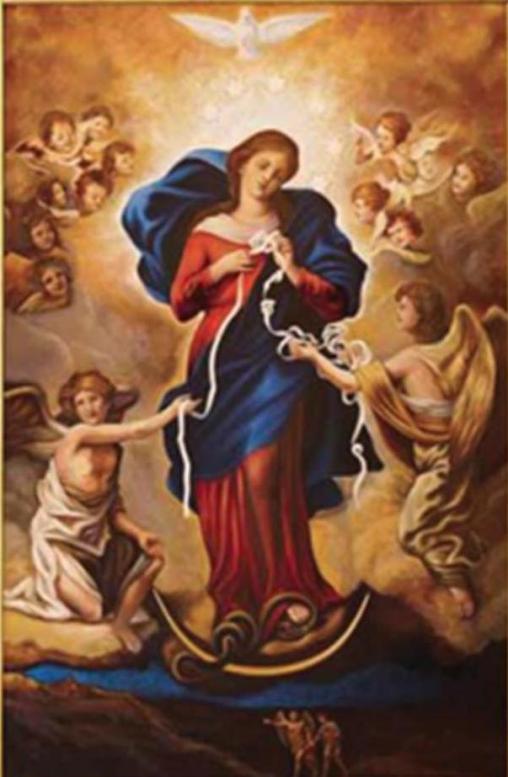To Love and Be Loved (thinking about a
friend.....)
She wanted to love and be loved.
She did,
she did not,
to be truthful,
she was not sure.
She liked the thought, the idea of love
but
every time
it had come along
it had passed on by.
She disliked the idea of tying a knot
but a bow?
now there was
something infinitely better
and in her mind, ever so beautiful.
She wondered how this could ever happen
without
a form of "commitment"?
Were knots the same as this?
This was a word with a meaning essential to any stability in
life.
She continued to flow with the idea of being faithful
to one.
Was this the
same as being joined,
being committed and when did this all begin?
She was already getting along in years
but still
had so many questions,
like, were there any edges to faithfulness?
What did it truly mean in practical, loving, experience?
She was looking for someone to be with
who didn't
have another love
on his mind, or in his heart,
or just lying around somewhere ready to pounce.
She did desire a without end, forever love.
Was there
a beginning and an end
to faithfulness? Could she find
a true love if that person was being unfaithful to another?
She felt her line of thought too complicated,
causing her
to do mental gymnastics
a mind not as agile, as flexible as it had been.
How could double-dealing fit with being honestly devoted?
She knew that her years of beauty were running down
her outer beauty
no man would find lovely
romantically so, very soon, unless blind
or majoring on the inside, appreciating her for her true self.
She wanted to love and be loved.
She did,
she did not,
to be truthful,
she was not sure.

Maria Knotenlöserin-- Johann Georg Melchior Schmidtner
The painting, displayed in the St. Peter am Perlach in Augsburg, Bayern, was donated ca. 1700 by a priest there to celebrate the reconciliation between his grandparents after a Jesuit prayed to Mary “to untie all knots and smoothen them” between the couple. It depicts Mary, the mother of Jesus, standing on a crescent moon, surrounded by angels and crowned with a circle of twelve stars. The Holy Spirit hovers above her in the form of a dove. She is untying a a long knotted rope and standing on the head of a “knotted” snake representing Satan. St. Irenaeus, 2nd-century bishop of Lugdunum (Lyon, France), wrote in his "Adversus haereses" (Against Heresies) (ca. 180) that “the knot of Eve’s disobedience was loosed by the obedience of Mary. For what the virgin Eve had bound fast through unbelief, this did the Virgin Mary set free through faith.” Below Mary in the picture are Tobias with his dog and the archangel Rafa'el. [Tobias is a Greek version of the Hebrew name "Toviyah" ("The goodness of God"), the central character of "The Book of Tobit," listed in the 5th century "Decretum Gelasianum" as one of the books that were pronounced canonical by the Council of Rome under pope Damasus I in 382 and later Councils (Hippo in 393, Carthage in 397 and 417, Florence in 1442, and Trent in 1546). Earlier, in 367, Athanasios Alexandrias had suggested that it was "appointed by the Fathers to be read" even though it was not cannonical, and the monk Rufinus of Aquileia characterized it as "Ecclesistical" rather than "Canonical." Protestants regard it as apocryphal because it was not included in the Tanakh or considered canonical by Judaism, though apparently it was regarded as historical by rabbinic scholars, and a truncated version was included in the "Midrash Bereishit Rabbah," a commentary on the Book of Genesis compiled between 400–600; it was also included in the "Septuagint" (the translation of the Torah and related texts from Henrew into Koine Greek, the lingua franca of the scholarly eastern Mediterranean culture centered on Alexandria, Egypt, beginning in the 3rd century BCE and completed by 132 BCE). It was probably composed between 225 and 175 BCE and was translated from Aramaic into Latin by Eusebius Sophronius Hieronymus ("St. Jerome") under the patronage of Damasus.] Tobit, living in Nineveh after Sargon II had deported the northern tribes of Israel to Assyria in 721 BCE, was blinded by bird droppings in his sleep, while in Media his cousin Sarah was being tortured by "the worst of demons," Asmodeus (the Persian "aeshma daeva"), who abducted and killed every man she married on their wedding night before they could commsumate their union. Tobit sent his son to Media to retrieve some money, and Rafaʾel ("It is God who heals"), claiming to be a kinsman, offered to accompany him. When Tobiyah washed his feet in the Tigris river, a fish tried to swallow his foot, but Rafa'el instructed him to remove its heart, liver, and gall bladder. When they reached Media, Rafa'el told him to marry Sarah and to burn the liver and heart to drive Asmodeus away. On the wedding night the fumes of the burning organs drove the demon to Upper Egypt, where Rafa'el bound him. After they returned to Nineveh, Rafa'el told Tobiyah to use the fish's gall to cure his father's blindness, then revealed his true identity and returned to Heaven.
ReplyDelete